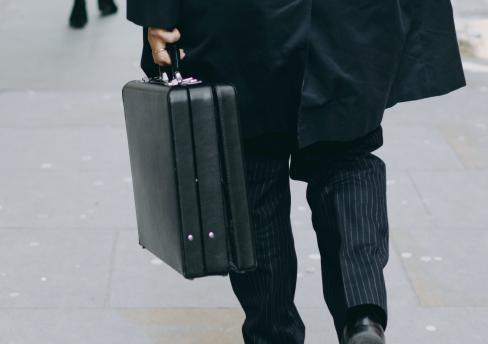
You don't have to spend long looking around you to see how important trademarks are. Whether they’re on clothes, shoes, cosmetics, electronic devices, food, drink or video streaming services, they dominate our lives.
If you're wondering why, ask yourself how much more you would pay for a set of Adidas trainers with the three stripes stitched down the side compared with an otherwise identical pair without the stripes? There's no doubt that trademarks are big business and if properly protected they can be very valuable assets. It's therefore hardly surprising that large businesses are prepared to spend significant sums of money protecting them (and other intellectual property).
For example, Disney is in the news from time to time because of what the media has sometimes described as 'heavy-handed behaviour' in protecting its intellectual property (IP); a story from a few years ago that comes to mind involved a small independent shop in Fife with the name 'Tinker Bell' over the front door, selling children's clothes. Apparently the shop owner received a letter from Disney's lawyers pointing out that 'Tinker Bell' is a Disney trademark and telling the shop to change its name. On the one hand it's easy to have sympathy for a small independent trader being leant on by a global giant with annual revenues in excess of $10 billion. On the other hand, what is Disney supposed to do instead? Its whole business is built on intangible assets and if it doesn't protect them they'll be devalued. It would be equivalent to not insuring its theme parks against the usual insured risks (fire, acts of God, terrorism etc). I presume that Disney simply has a policy of protecting its rights every time it sees an infringement.
Another example is Mars, Inc., the maker of the Mars Bar. Mars Inc was in the news in 2012 for asserting its rights to the Mars name by writing to the Carron Fish Bar in Stonehaven that specialises in deep frying Mars Bars. Again, there were allegations of heavy-handedness, but in that case Mars managed to make its point to the owners in a relatively friendly manner, thereby generating some good publicity for itself and for the Carron Fish Bar.
Much closer to home, one of the principal roles of the Scotch Whisky Association (SWA), the trade association for the Scotch Whisky industry, is to protect Scotch Whisky, Scotland’s leading food and drink export. Global exports are worth around £4.9bn and its popularity means that there are many who want to take advantage of it by selling fake Scotch or trading unfairly on its reputation. As part of its protection work, the SWA monitors trademark applications filed around the world with a view to preventing the registration of potentially misleading marks. It seeks to prevent marks which are evocative of Scotland or the UK from being registered and used in respect of whisky and whisky based drinks produced elsewhere.
Last year, the SWA raised objections to around 300 trademark applications filed in over 40 countries. The SWA, for example, would raise objection to an application filed in Nigeria by a local company seeking to register the label mark “GLEN HIGHLAND” with a tartan border and image of a bagpiper on it for use on whisky produced in Nigeria. Such use would likely be misleading for consumers, undermine the integrity of indications of Scottish origin when used on whisky and adversely affect Scotch Whisky’s global reputation. Wherever possible, the SWA seeks to contact applicants and amicably resolve its concerns creatively without the need for formal action but, if necessary, it will raise opposition proceedings to protect its position.
Taking action to prevent the registration of potentially misleading marks forms a key part of the SWA’s legal protection work and it has several benefits. For example, it is a very useful source of intelligence and can be an early warning of the intention to use a deceptive mark which can enable the SWA to take pre-emptive action in a cost effective manner before a misleading product is placed on the market. I think we can all raise a glass to that, slàinte!
This article was first published in The Herald
The content of this webpage is for information only and is not intended to be construed as legal advice and should not be treated as a substitute for specific advice. Morton Fraser LLP accepts no responsibility for the content of any third party website to which this webpage refers. Morton Fraser LLP is authorised and regulated by the Financial Conduct Authority.









